I am pleased to transmit for your kind attention the concept note for the open debate of the Security Council on the theme “Children and armed conflict: effective strategies to end and prevent grave violations against children”, to be convened on 25 June 2025 by the delegation of Guyana in its capacity as President of the Security Council for June (see annex).
(Signed) Carolyn Rodrigues-Birkett
Ambassador and Permanent Representative of the Co-operative Republic of Guyana to the United Nations
During its presidency of the Security Council, the Co-operative Republic of Guyana will organize an open debate on children and armed conflict on 25 June 2025. It is being held as we approach the twentieth anniversary of Security Council resolution 1612 (2005), which established the framework for monitoring and reporting on violations against children in armed conflict and the Working Group on Children and Armed Conflict.
The open debate will provide an opportunity for Member States to consider the findings of the report of the Secretary-General on children and armed conflict (A/79/878-S/2025/247) pursuant to Security Council resolution 2427 (2018) and renew their commitment to the children and armed conflict mandate, including the role of the Special Representative of the Secretary-General for Children and Armed Conflict. It is also an opportunity to highlight that children remain disproportionally affected by armed conflict and to urge parties to conflict to end and prevent grave violations against children in accordance with their obligations under international law.
Trends and patterns in 2024
The report of the Secretary-General on children and armed conflict highlights that, in 2024, violence against children in armed conflict reached unprecedented levels, with a staggering 25 per cent surge in the number of grave violations in comparison with 2023. Across 25 situations and one regional monitoring arrangement covering the Lake Chad basin region, the United Nations verified the highest number of grave violations since the establishment of the monitoring and reporting mechanism on children and armed conflict, with over 41,000 grave violations verified, including more than 5,000 grave violations that were committed earlier but verified in 2024. The highest numbers of grave violations were verified in Israel and the Occupied Palestinian Territory, the Democratic Republic of the Congo, Somalia, Nigeria and Haiti. The sharpest percentage increases in the number of violations were verified in Lebanon, Mozambique, Haiti, Ethiopia, and Ukraine. This does not represent the full scale of violations against children but provides United Nations-verified trends in grave violations against children.
The violations verified in the greatest numbers were the killing and maiming of children, the denial of humanitarian access, the recruitment and use of children, and the abduction of children. Of deep concern, rape and other forms of sexual violence increased by 35 per cent compared with 2023, with cases of gang rape rising dramatically. The denial of humanitarian access reached an alarming scale, resulting in children being left without access to healthcare, education, protection and life-saving necessities.
Given the worrying trends described in the report of the Secretary-General, the 2025 open debate on children and armed conflict will be focused on effective strategies to end and prevent grave violations against children, particularly:
- The killing and maiming of children, including as a result of the use of explosive ordnance, including mines, and the use of explosive weapons in populated areas, as well as the long-term consequences of explosive remnants of war;
- Rape and other forms of sexual violence against children.
Killing and maiming of children
In 2024, children were killed and maimed in appalling numbers by air strikes, shelling, the use of explosive ordnance, including explosive remnants of war, mines and improvised explosive devices, and by crossfire between parties to conflict. The widespread and indiscriminate use of explosive weapons in populated areas and against civilian objects resulted in increased child casualties. Children are the most vulnerable to explosive weapons, including explosive remnants of war and mines, which hit indiscriminately, often years after conflict has ended. From the Sudan to Ukraine, Syria to the Occupied Palestinian Territory, in particular, in the Gaza Strip, children were indiscriminately killed or maimed by explosive ordnance. Often, the use of explosive ordnance resulted in disabilities for children with long-term and devastating effects.
Despite being crucial for the safety of conflict-affected children and the post-conflict recovery of communities, explosive ordnance clearance, risk education programmes and victim assistance remain underprioritized and underfunded. In some situations, explosive remnants of war have shifted due to flooding related to climate change.
Rape and other forms of sexual violence against children
The number of cases of rape and other forms of sexual violence increased by 35 per cent compared with 2023. It is alarming that, since 2020, sexual violence against children has increased every year. In 2024, the number of cases of gang rape rose considerably, underlining the blatant and systematic use of sexual violence as a tactic of war, including to gain and consolidate control over territory. While sexual violence disproportionately affected girls, boys were affected too.
Sexual violence continues to be severely underreported due to stigma, risk of reprisals and lack of trust in, and access to, justice systems. The trauma of child victims is compounded by a lack of adequate sexual and reproductive healthcare, support services and legal protections. This underscores the urgent need for funding for gender-sensitive and trauma-informed responses and strengthened accountability mechanisms.
In 2024, children bore the brunt of relentless hostilities, indiscriminate attacks and humanitarian crises, as parties to conflict showed persistent and blatant disregard for international law. Warfare strategies included attacks on civilians and civilian objects, particularly schools and hospitals, the use of explosive weapons in populated areas, as well as rape and other forms of sexual violence against children. The urbanization of conflicts, climate emergencies and regional insecurity further increased children’s vulnerability. With the gap between needs and funding exponentially increasing, it is crucial that budget cuts are not made at the expense of children.
Despite the dire situation, some progress on the protection of children was achieved under the children and armed conflict mandate, including through engagement with parties to conflict to adopt concrete and practical measures to protect children and release children associated with armed forces and armed groups. This resulted in the release of children from armed groups, including in the Democratic Republic of the Congo and Myanmar. In Afghanistan, Cameroon, Colombia and South Sudan, schools that were used militarily were vacated. Since the inception of the children and armed conflict mandate, the United Nations has signed more than 40 action plans with parties to conflict, under which they committed to concrete and practical measures to protect children in armed conflict. In 2024, approximately 40 commitments were made by parties to conflict, including handover protocols.
Guiding questions
- What more can be done to promote and ensure compliance with international law, including international humanitarian law and human rights law, and the rights and special protections for children in armed conflict?
- How can there be increased accountability for perpetrators of grave violations against children?
- What actions can be taken to deter the use of explosive ordnance and maintain the international consensus banning the use of mines? How can we achieve universal ratification and improve compliance with obligations under the Ottawa Convention and the Convention on Cluster Munitions given the devastating impact of these weapons on children?
- What efforts can be made to combat rape and other forms of sexual violence against children and strengthen accountability mechanisms for this violation?
- How can listed parties be encouraged to engage with the United Nations to adopt concrete and time-bound action plans to end and prevent grave violations against children? What more can Member States do to encourage Governments of situations on the children and armed conflict agenda to commit to prevention measures to ensure the protection of children during conflict in cooperation with the United Nations?
…(continues)
SOURCE: United Nations Security Council, Document S_2025_366-EN.pdf. https://digitallibrary.un.org/record/4084023?ln=en&v=pdf



